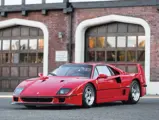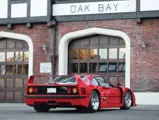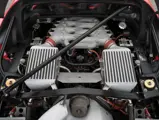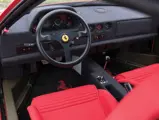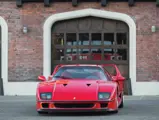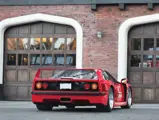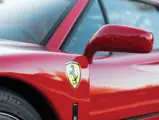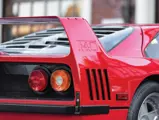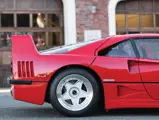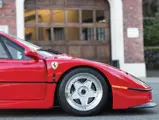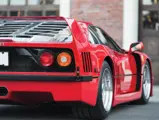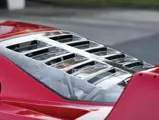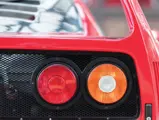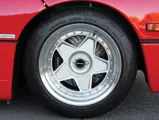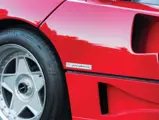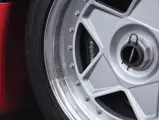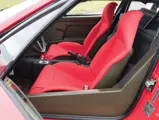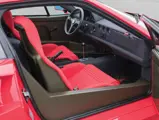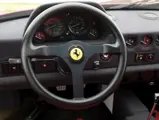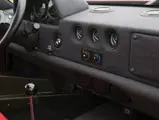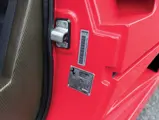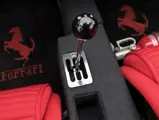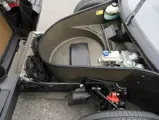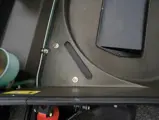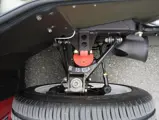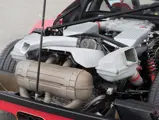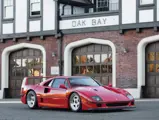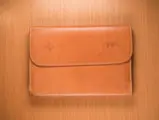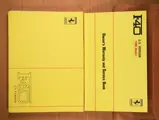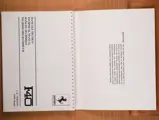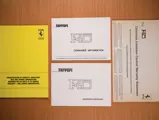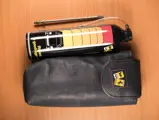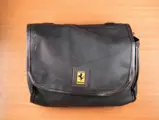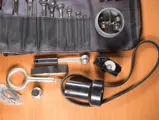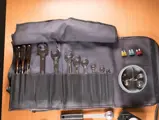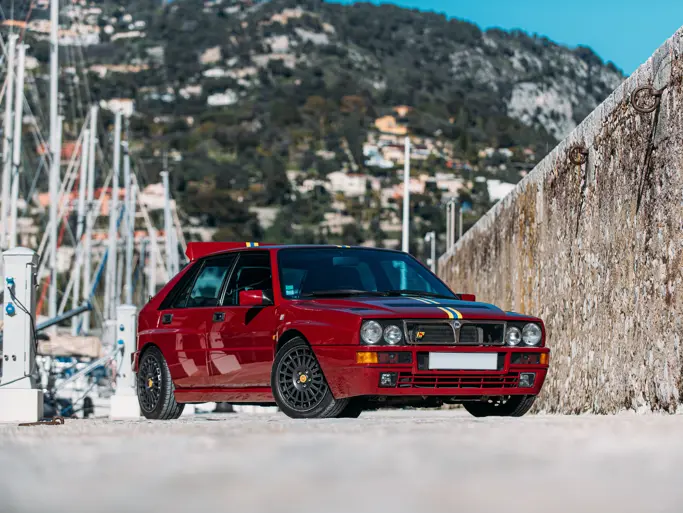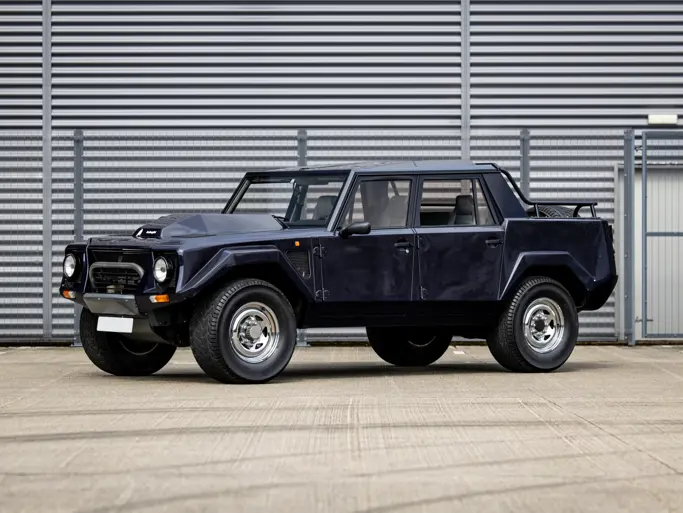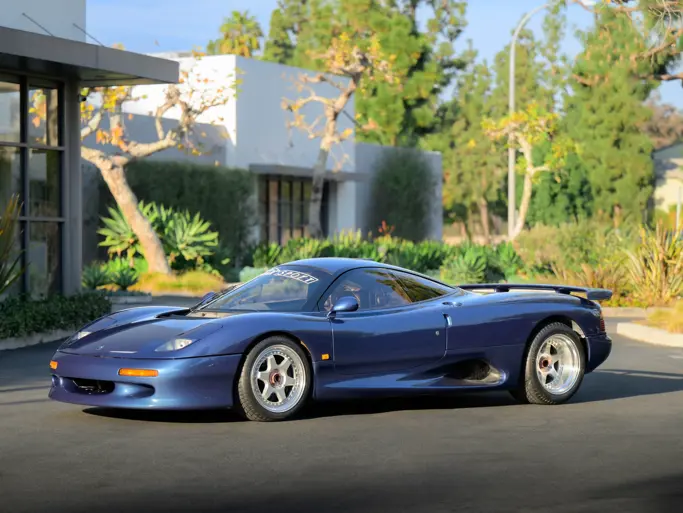New York - ICONS 2017
1990 Ferrari F40
{{lr.item.text}}
$1,242,500 USD | Sold
 | New York, New York
| New York, New York
{{internetCurrentBid}}
{{internetTimeLeft}}

- Among the most iconic of Ferrari supercars
- One of 213 catalytic converter/non-adjustable suspension U.S.-spec F40s
- Fewer than 8,100 documented miles and over $118,000 in service records
- Exceptionally well documented and maintained since new
In any discussion of automotive icons, the Ferrari F40 is surely amongst the first cars to be mentioned by anyone under the age of 40. Celebrating the company’s 40th birthday, the F40 was the pinnacle of what Ferrari could create as a company. At the cutting edge of performance, it handily put Lamborghini’s Countach and Porsche’s 959 in its rearview mirror, claiming title to the fastest production car in the supercar-crazed world of the 1980s. Unfortunately, with Enzo’s passing, the F40 was also the last car to receive the blessing of il Commendatore, bringing about the end of an era for one of the most storied marques in automotive history.
While the 959 achieved its top speed through pioneering several innovative technologies, the F40’s relentless pursuit of performance was achieved through the tried-and-true method of less weight and more power. Ferrari made prolific use of fiberglass and carbon Kevlar for both its chassis and bodywork, with the F40 tipping the scales at a svelte 2,400 pounds. Its imposing shape was designed with aerodynamics in mind, providing for excellent high-speed stability and plenty of airflow to the engine to prevent overheating. The interior made no compromises in the pursuit of performance, as well. Fitted with lightweight bucket seats and devoid of creature comforts, the F40 was equipped with either roll-up or fixed windows, no carpeting, and featured simple door pulls instead of traditional handles.
Equally as impressive as its approach to weight savings was the F40s powerplant. The twin-turbocharged 2.9-liter V-8 was based on that found in the 288 GTO, but featured bigger bores and a shorter stroke. Producing 478 hp, the F40 could rocket to 60 mph in just 3.8 seconds, leading to a quarter mile of 11.8 seconds. Should the driver have the courage to keep accelerating, the F40 would easily pass the 959 at 197 mph, ultimately reaching 201.4 mph. This was a monumental milestone as it was the first production car to break the 200-mph barrier.
Ferrari originally planned to build just 400 F40s, but demand far outweighed the intended production run, pushing the total number built to 1,311. In 1990, after three years and $11,000,000 in development and modification, Ferrari offered the F40 to the U.S. market. By the end of production in 1992, just 213 were sold to owners in the United States. While every F40 left Maranello in left-hand drive and finished in traditional Rosso Corsa, a handful of changes were made over the course of the production run. The earliest cars had no catalytic converters and a non-adjustable suspension, while the latest cars had both catalytic converters and adjustable suspension. Ferrari made one concession to creature comfort for U.S.-delivery F40s: air conditioning was fitted as standard.
Completed by Ferrari in October 1990, chassis number 87144 was built in U.S. specification to mid-series “cat/non-adjust” specifications and delivered to Steve Harris Imports, the official Ferrari distributor in Salt Lake City, Utah. It was subsequently sold new on 6 March 1991.
Believed to have remained in Utah with its first owner, the car was sold to its second owner, David R. Belding of Las Vegas, Nevada, in March 1995. Belding was founder of Gold Strike Resorts and had sold the company that same year—perhaps the reason for gifting himself this F40, which had only been driven 485 miles at the time. Belding kept the car for the following nine years, driving it only an additional 315 miles during his tenure.
Chassis 87144 was then sold to its third owner, Brian Gibbs of New Orleans, Louisiana, in 2004. It remained with Gibbs from 2004 until 2012, during which time the car saw the majority of its time on the road. In 2012, Ferrari of Houston sold the F40 to a supercar collector from Calgary, Alberta, Canada. A major belt service was done at 7,977 miles and the seats were re-upholstered as the original fabric is known to degrade over time. At 8,017 miles, the car went in for a full service and comprehensive inspection by Ferrari of Vancouver to make sure everything was in working order. The front end was also wrapped with clear 3M Rock Guard to protect the original paint from stone chipping. Today, it is ready to drive and enjoy, presented in wonderful condition throughout.
The file of documentation accompanying this F40 is impressive and includes invoices over the last 16 years of the car’s life, totaling to $118,000 in service work. Furthermore, the car is accompanied by a clean Carfax report and a proper set of books, tool kit, and car cover.
As low-mileage and original F40s are becoming increasingly difficult to find, the offering of this example is all the more significant. For the enthusiast wanting to acquire the most iconic supercar of the 1980s for their collection, there can be no better choice.

